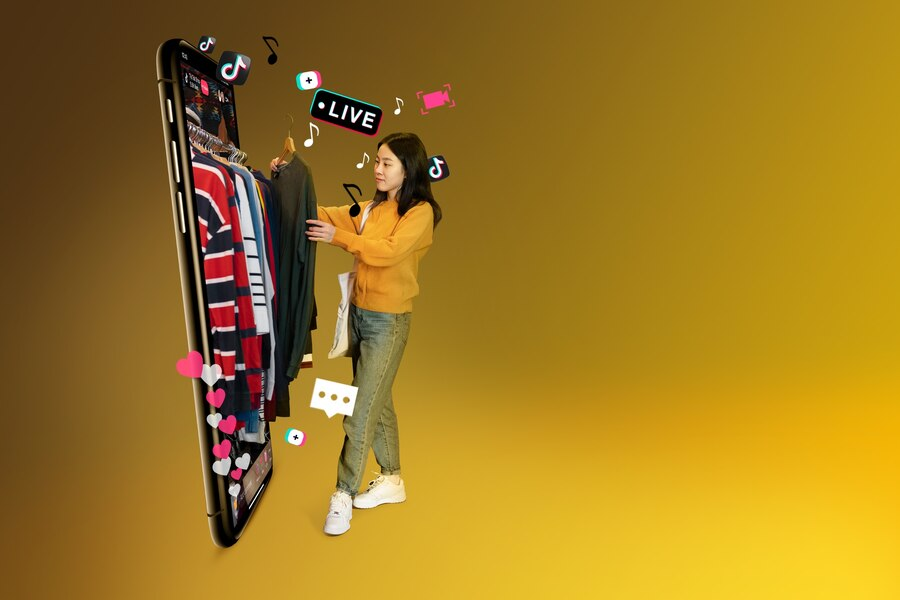In today’s digital age, the rise of social media has given birth to a new breed of influencers. These individuals can sway the opinions and purchasing decisions of their followers. However, not all influencers are what they appear to be.
There is a growing concern about fake influencers manipulating their follower count, engagement metrics, and content quality to deceive brands and businesses.
Who are fake influencers?

Fake influencers fabricate their online presence to give the illusion of influence and popularity. They may buy fake followers, likes, and comments to inflate their social media metrics and make themselves appear more influential than they are. This deceptive practice is unethical and can also be detrimental to businesses that partner with these influencers in hopes of reaching their target audience. The concern about fake influencers has been steadily growing, with 67% of brands worried about influencer fraud (Influencer Marketing Hub, 2022).
Identifying these fake influencers is crucial for businesses to make informed decisions about collaborations and partnerships. By leveraging social listening tools, brands can uncover valuable insights into an influencer’s authenticity and determine whether they are worth investing time and resources in.
How do you spot fake influencers using social listening?
Social listening is a powerful tool that allows businesses to monitor conversations happening on social media platforms. It enables them to gain deeper insights into customer sentiment, industry trends, and competitor analysis. When spotting fake influencers, social listening can be crucial in identifying red flags that indicate inauthenticity. Here are several strategies you can employ:
Analyze their profile and bio
Start by thoroughly examining an influencer’s profile and bio. Look for inconsistencies or suspicious information that could indicate a lack of authenticity. Pay attention to the number of followers compared to engagement metrics like likes, comments, and shares. If there is a significant disparity between these numbers, it could be a sign of bought followers or engagement.
Additionally, assess the content within the influencer’s bio.
Are there any false claims or excessive self-promotion?
Authentic influencers tend to focus on their expertise and the value they can provide to their audience rather than boasting about their achievements or exaggerating their capabilities.
Check their profile engagement
Engagement is a critical metric to evaluate when determining an influencer’s authenticity. Look beyond the number of followers and examine their posts’ quality and quantity of engagement. High follower counts mean little if there is little to no interaction with their content.
Pay attention to the comments section of their posts.
Are there genuine conversations taking place?
Do people ask questions or share personal anecdotes related to the content?
Authentic influencers foster meaningful engagement with their audience and actively participate in these conversations.
However, beware of influencers who have suspicious patterns of engagement, such as receiving an unusually high number of likes or comments within a short period. This could indicate that they are using engagement pods or other artificial means to boost their metrics.
Research their reputation

Conduct thorough research on the influencer’s reputation within your industry or niche. Look for any past collaborations they have had with brands similar to yours. Explore whether these partnerships have been successful and if the influencer has generated tangible results for those brands.
Use social listening tools to track mentions and sentiment around the influencer’s name or handle. If there are any negative sentiments or controversies associated with them, it might be a red flag that they are not as reputable as they seem.
It’s also worth reaching out to other businesses or marketers who have worked with the influencer in question. Their insights and experiences can provide valuable information about the influencer’s professionalism, work ethic, and overall effectiveness as a brand partner.
Evaluate their follower growth patterns
Authentic influencers tend to experience gradual and organic growth in terms of followership. Take a close look at an influencer’s follower growth patterns over time. Sudden spikes in followers, followed by periods of stagnation, could indicate the use of automated bots or other fraudulent tactics.
Consider using social listening tools to analyze the influencer’s growth trajectory. Look for irregularities or suspicious patterns in their follower count. Remember that an influencer’s audience should be genuine, engaged, and interested in their content.
Check for authentic conversations
One of the key indicators of an authentic influencer is their ability to foster real conversations with their audience. Analyze the comments on their posts to determine if people are genuinely engaging with the content. Look for thoughtful comments, questions, and personal anecdotes.
Fake influencers often receive generic and repetitive comments that do not contribute to meaningful engagement. These comments may consist of short phrases or emojis that do not add value to the conversation. Be cautious when assessing an influencer’s engagement metrics using social listening tools, as these could be a sign of inauthenticity.
Look for consistent content quality
Authentic influencers prioritize delivering high-quality content that resonates with their target audience. Take a closer look at the type of content they create and how consistently it aligns with their niche or industry expertise.
Look for originality, creativity, and thought leadership in their posts.
Additionally, assess the quality of visuals and captions used by the influencer. Inconsistent or poorly curated content could indicate a lack of professionalism or effort on their part.
Try to communicate with them

Engaging in direct communication with influencers can provide valuable insights into their authenticity and professionalism. Reach out to them via direct messages or email and observe how they respond. Authentic influencers are typically responsive, approachable, and open to collaboration opportunities.
Pay attention to any red flags during your communication. Are there any inconsistencies in their messaging? Do they seem unprofessional or uninterested? Trust your intuition when evaluating an influencer’s authenticity through personal interaction.
Conclusion
In today’s digital landscape, fake influencers pose a significant challenge for businesses
seeking genuine partnerships and collaborations. However, by leveraging the power of social listening, brands can spot these fake influencers and make informed decisions about whom to engage with. Businesses can separate genuine influencers from impostors by analyzing an influencer’s profile, engagement metrics, reputation, follower growth patterns, authentic conversations, content quality, and personal communication. Stay vigilant and use social listening against fake influencers in the ever-evolving world of social media marketing.




























